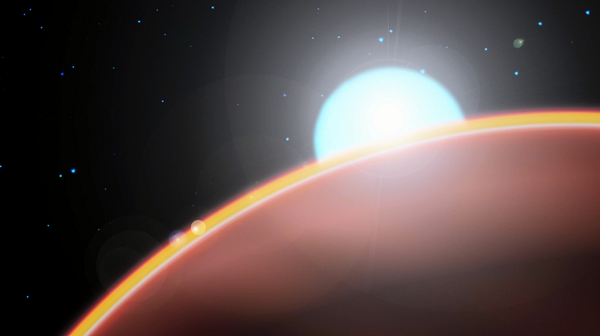 Exoplanet WASP-18b has been intriguing scientists since 2009 when it was first discovered. The planet is special because even though its upper atmosphere is rich in carbon monoxide, it lacks any traces of water.
Exoplanet WASP-18b has been intriguing scientists since 2009 when it was first discovered. The planet is special because even though its upper atmosphere is rich in carbon monoxide, it lacks any traces of water.
The composition of WASP-18b defies all expectations,
researcher Kyle Sheppard said.
Sheppard led a team of researchers that has just published a research paper on the puzzling alien world. The study appeared in The Astrophysical Journal Letters.
The research team has even a nickname for the distant planet: The “Death Planet,” even though no other planets in its league known as “hot Jupiters” are not excelling at harboring life either.
Other hot Jupiters’ atmospheres contain vanadium oxide or titanium oxide, two chemicals that absorb sunlight in the planet’s upper atmospheric layers. This is the case with WASP-18b too but there is a slight difference.
A Baffling Alien World
After scientists analyzed the light coming from that planet, they found that its upper atmosphere is packed with carbon monoxide. Other planets contain carbon dioxide in their atmosphere as well. For instance, planet Venus’ atmosphere contains a lot of carbon dioxide, which suggests the presence of oxygen and great odds of having water on its surface.
- On WASP-18b, there is no trace of water whatsoever, which baffled scientists.
- It is the first time they found a sun-absorbing alien world based on carbon monoxide alone.
- Study authors think the revelations could open a new window into how they understand the chemical processes in these exoplanets’ atmospheres.
- The mysterious exoplanet must have formed in a completely different way than other hot Jupiters.
Researchers are confident the James Webb Space Telescope will enable them to better understand WASP-18b and the other similar exoplanets. The telescope is slated for launch in 2019.
Image Source: NASA

Leave a Reply
You must be logged in to post a comment.